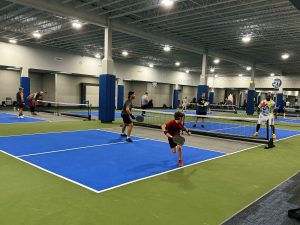Guest post written by Johnny Crosskey, SEO & Content Specialist, The Sports Facilities Companies.
The guest experience no longer has to be “one-size-fits-all” as new innovations allow venues to provide spectators and athletes with the exact information they need at the precise moment that they are ready to take action. New technologies can also give us insight on consumer behavior, even during events. Allowing venue operators to adjust and create promotions to their current audience.
What Is Geofencing:
We all place a high value on the guests that come through our doors for events. And technologies like geofencing are adding a new layer of value beyond what we’ve traditionally received from our guests. Geofencing is a location-based tool that places a virtual “fence” around a central point in or around your venue. When people enter this “fence,” a targeted message is delivered to their device. In most cases, this message is a discount on a specific retail or concession item. The message may also notify people of an upcoming event. Additionally, geofencing may be used to initiate the registration and check-in processes when entering a facility or poll them on their experience when leaving.
How It Works:
While the tools used to set geofencing up differ slightly depending on whether you are an indoor or outdoor facility, the principles are the same. You must first map out the area that you’d like to geofence, which greatly depends on your goals for the activity. If you want to monitor where people are gathering during events. You may fence an entire area. If you want to push promotional messages about your event at another event or in high density area (business districts, for example), you may target areas where you think consumers will congregate. If you want to push coupons and giveaways at your event, you may set up a fence around registration or other high traffic areas.
To execute a geofence, you or your event partner may use GPS or RFID software to define the boundaries of your geofence. Certain mobile apps have a code installed that allows notifications to be launched when entering the geofence.
For indoor venues, WiFi, Bluetooth beacons or geomagnetic information is used to transmit data and establish the geofence area.
Benefits:
Operators can target marketing efforts for specific items to the segments of their audience that are most likely to become buyers. For example, guests that approach a concession stand may receive discounts on smaller menu items such as French fries with purchase of a sandwich and drink. Geofencing can also capture location data that can be used to better understand the duration of an attendee’s time at an event and overall peak attendance.
For guests, push notifications provide pertinent information to them at the moment they need it. They can also receive an easy registration process when registration information is pushed to them upon entering a specific location.
Obstacles To Entry:
Compared to other innovations, geofencing is relatively easy to set up as it uses tools that you likely already possess such as WiFi or ones that users possess such as GPS. Facilities or event partners will have to invest in an app, but it can be used for a variety of purposes. The most challenging barrier to successful implementation of geofencing is the user. As we mentioned earlier, app usage is low. To enter the geofence, the user must consent to have their location tracked. Growing distrust over how companies use data makes this a tremendous challenge. To overcome these challenges, facility operators must be clear about how the geofence and their data will be used.
Geofencing In Action:
Super Bowl XLVIII in New York City focused on geofencing technologies to keep fans abreast of activities at their interactive village, Super Bowl Boulevard. Beacons were placed throughout the venue launching numerous geofencing areas. When guests entered them, they were notified of a variety of events, including autograph signings, toboggan races, and opportunities to take pictures with the Lombardi Trophy.






